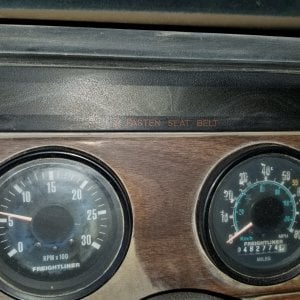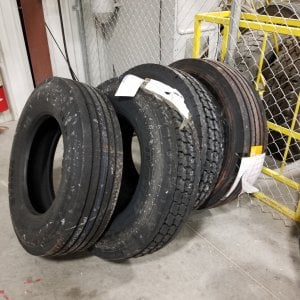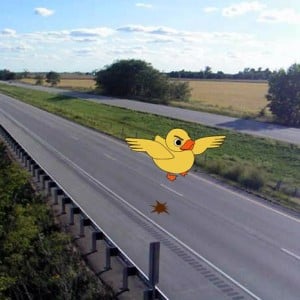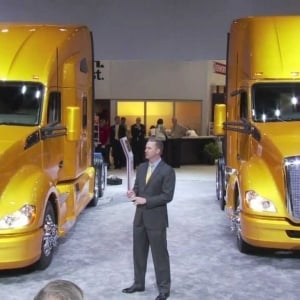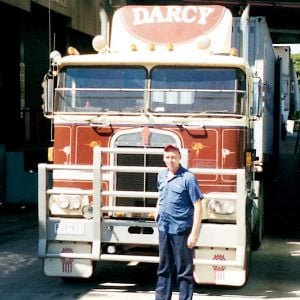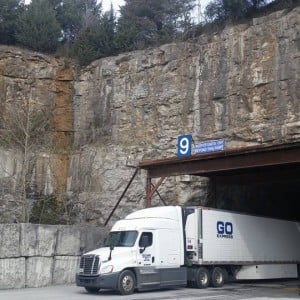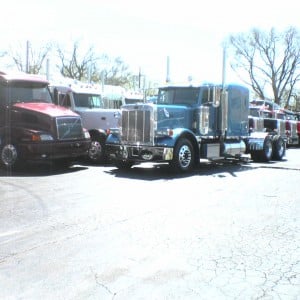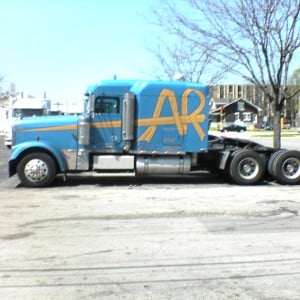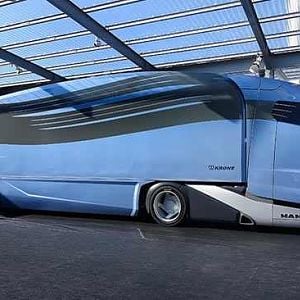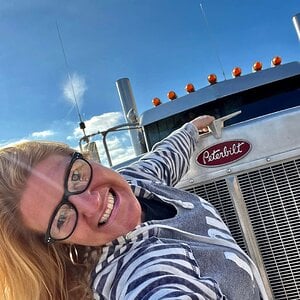
Most articles on winter driving are overwhelmed with the same platitudes that really don’t teach you anything. You know, “Leave more space,” and “Park if you can,” etc, etc, ad nauseum. And so this posted with hope of helping drivers who want to learn, giving them a few tools to better themselves.
Learning how to drive in the winter isn’t about those platitudes. Yes, leaving more space and being more gentle with your inputs are good ideas, but if you want to learn winter driving you need to know the ‘why’ of those ideas. That ‘why’ is simple in concept, and a tad more difficult in execution, and it takes time to develop an innate grasp of it. But it all comes down to what the Motorcycle Safety Foundation teaches as the ‘Traction Circle.’ (If you ride and have never taken the RiderCourse, do yourself a favor and take the advanced course, you will be a better rider.)
A tire has a certain amount of traction to offer, depending the surface, temperature, and slip angle. It can give you that traction in direction parallel to rotation (braking and acceleration,) or perpendicular (centering and cornering.) But it only has so much traction to give, so that if you’re using all the available traction for forces in one direction, there’s nothing left for the other. It’s why a very hard accelerating car feels just a touch squirrely, and a hard cornering one can only take minimal throttle or brake. That’s simple enough, and most of you know this without having given it much thought. But giving it thought is what you need to do if you’re going to make sense of the signals your truck sends you in low traction situations. And always remember: a rolling tire will always offer more traction than a sliding one. ALWAYS!
The biggest challenge of winter driving is the extreme variability in the amount of traction you have to work with while going down the road. Sure, it’s not much of an issue up in the Northern Plains, with the dry, very cold, snowpack common up there, you can run all day at highway speeds, as the traction is quite good. But get the temp closer to freezing and it’s a whole different animal. The variations in the underlying pavement can cause rapid changes in available traction. Everything from pavement color, material, camber, the amount of sunlight, etc., can change the snow laying on top. And this is where you, the driver come in. You have to be able to read the conditions not just by sight, but feel.
One of the biggest problems faced by inexperienced winter drivers is directly related to that variability. They are moving along just fine, and they hit a spot where traction drops, which causes the truck to dance around a bit as the drives start to slip. (The traction circle of those slipping drives contracts dramatically, and suddenly those tires don’t have enough grip for both the power they are transmitting and keeping the truck laterally stable.) And their response is almost invariably to jump off the throttle. We all know the problems associated with this: the speed drops rapidly due to the increased drag of the poor conditions, and the driver goes back and forth between trying to find the right gear and blowing the tires away trying to regain speed, until such point as they spin the drives out as they come to a halt in the traffic lane. All because the truck was dancing a bit.
Now I’m not advocating going down the road out of control, but I could call out any number of old-timers around here who will tell you the same thing: On the really trashy roads, your truck is going to dance around a bit. It doesn’t matter how light you are on the throttle or brake, the available traction varies so quickly and greatly that there will be brief instants you’ve used up the traction. It’s not something you can normally even see, it’s just something you feel. And that feel is what it’s all about.
You don’t drive by sight in those conditions, as if you wait until you see what’s happening, you’ll soon find yourself a spectator who’s just along for the soon-to-be-rough ride. You have to learn to feel what’s happening down at the tires. When one of the three sets of axles slips, it feels just a bit different for each. This is because they each introduce different forces into the chassis, and cause slightly different yaws that your backside can tell apart. It’s hard to describe, but the best I can come up with is that a trailer slide feels like a tug to the side, while the drives feel more like a sideways push, and the steer is more a loss of force, a slip, if you will.
So how does all that relate to traction? Simply put, what you feel and see and hear tells you which axle is the problem and dictates your response. That little jig of trashy roads is just there, if it start to increase, it’s time to slow down some more. The other motions require direct and prompt action to avoid problems.
The drive slip is the easiest, it simply calls for a reduction in throttle or brake. You don’t jump off the throttle, or complete release the brakes, you merely reduce them to the point that you’re no longer using up all of your traction circle. Any sudden change in those forces can introduce a whole slew of new issues with traction in other places on the truck, and are best avoided. It’s also a good idea to operate the truck in a lower gear than normal to keep the engine RPM up. Modern engines develop so much torque over so much of the lower RPM range, that when a tire does break loose, it can often accelerate extremely rapidly, and that increases the time it takes for that tire to slow and regain traction. Operating higher up in the RPM range has two benefits: the engine makes less torque at higher rpm, so it accelerates slower, and it’s also much closer to the governor, limiting how far it accelerates if you do break loose.
Steer slip is a touch more complex, as you have to consider more of the outside conditions. Road camber and grade are the usual suspects here, and all you can do is hope to reduce the side load on the tire so it can offer steering grip. That is usually a small throttle reduction which both reduces the side load and increases the weight on the footprint oh so slightly.
Trailer slides get the most discussion, as they seem to freak out drivers even more than the drives moving around. I’ll say right here, and clearly, that driving on glare ice (w/o chains) is a fool’s errand. It’s the most common cause of trailer slides, and you’ll get caught in it once in a while, but I never choose to drive on it. And I don’t stop unless the road is closed for snow. Now, on to dealing with the trailer getting out of shape.
These are perhaps the hardest to deal with, because our instincts are wrong. One sees the trailer stepping out, and we all want to slow down. That’s the absolute worst thing to do, and here’s why: When the truck slows, it pushes back on the kingpin. That’s all well and good when everything is lined up normally, but once the trailer has stepped out and is sliding, the force on the kingpin is no longer in line with trailer’s center of gravity. And so the more you push on the kingpin, the more the trailer tries to come around.
Here’s a nice little experiment to try that demonstrates this quite clearly: Put a pen on the table in front of you, pointing straight away from you. Now push the pen directly away. No problems, right? Now set the pen at a shallow angle, and again try to push it straight away. No working so well, is it? And the greater the angle, the less of your push goes into away and more goes into yaw. Your trailer behaves the same way!
So the counter-intuitive response to a trailer slide is some throttle. What you have to do is add just enough throttle that the truck is pulling ever so slightly on the kingpin. (BTW, this is also how you should cross an iced over bridge, just barely over neutral throttle.) You most likely won’t accelerate, the truck will just not slow as quickly. This takes away the yaw forces introduced by the kingpin and allows the trailer to gradually come back into line. You don’t want to give a large throttle input, as that could snap the trailer back to the other side like a pendulum, and that is often irrecoverable. Some guys will swear by adding a little trailer brake with the johnny bar, my instinct is too not ask the already sliding trailer tires to do anything else but self-center behind the truck. And that’s what they will eventually do, as they trailer starts to return to center, the tires will be slipping less and rolling more, and the rolling is what keeps the trailer behind you. TO REPEAT: A rolling tire offers more traction than a sliding tire…ALWAYS.
So how do you learn to feel all this? Time and some practice. A slick empty lot will let you cause these differing slips at very low speeds so can start to differentiate one from the other. The guys who grew up driving in snow do have a distinct advantage here, but it’s not insurmountable. The other is just time on the road in nasty conditions, and yeah, I realize the many companies don’t offer that chance, as they park their trucks sooner rather than later. I was fortunate enough to learn to drive trucks in the Western Oklahoma oilfields, and those wet shale roads aren’t a bad training ground for winter driving. But it just takes some time driving in it to learn to feel it.
I’ll leave you with some Simon & Garfunkel as you hopefully ponder and absorb some of this wisdom:
~Believe we’re gliding down the highway,
when in fact we’re slip sliding away~


